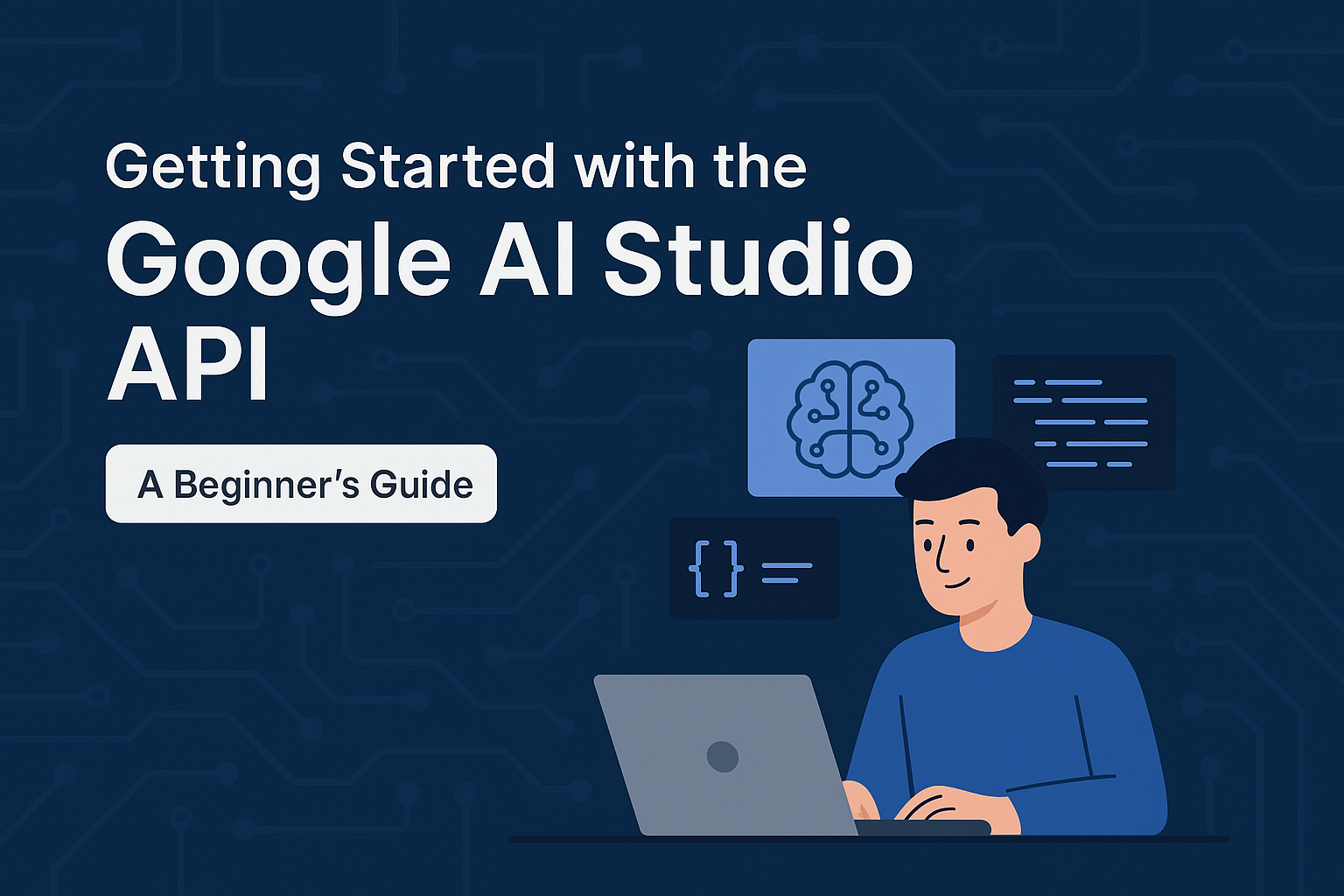


Getting Started with the Google AI Studio API: A Beginner’s Guide
The Google AI Studio API is transforming how developers integrate machine learning into their applications. With access to powerful tools like Vertex AI, AutoML, and pre-trained models, it streamlines the process of building, training, and deploying AI-powered solutions. Whether you’re automating tasks or creating smarter user experiences, this guide will walk you through everything you need to get started.
1. What is the Google AI Studio API?
The Google AI Studio API provides developers with programmatic access to Google’s AI/ML ecosystem. It integrates seamlessly with tools like Vision AI, Natural Language Processing (NLP), and custom model training — all through a single interface.
💡 Example: Deploy a sentiment analysis model on customer feedback within minutes.
📊 Stat: 65% of developers use APIs to speed up AI adoption (Statista, 2023).

2. Set Up Your Google Cloud Environment
Before using the API, you’ll need to prepare your environment:
- Visit the Google Cloud Console
- Create a new project
- Enable AI Studio API in “APIs & Services”
- Install the Cloud SDK and Python client library:
bashCopyEditpip install google-cloud-aiplatform
💡 Pro Tip: Start experimenting using Google Cloud’s free-tier credits.
3. Authenticate with Google Cloud
To make secure API calls:
- Go to IAM & Admin > Service Accounts
- Create a service account and generate a JSON key
- Set your credentials:
bashCopyEditexport GOOGLE_APPLICATION_CREDENTIALS="path/to/your-key.json"
📚 Resource: Follow Google’s authentication best practices.

4. Make Your First API Call (Sentiment Analysis Example)
Let’s test the API with a simple NLP task:
pythonCopyEditfrom google.cloud import language_v1
client = language_v1.LanguageServiceClient()
text = "Google AI Studio API simplifies AI integration!"
document = language_v1.Document(content=text, type_=language_v1.Document.Type.PLAIN_TEXT)
response = client.analyze_sentiment(request={"document": document})
print("Sentiment score:", response.document_sentiment.score)
✅ Result: A sentiment score of 0.9 indicates strong positive emotion.
📊 Stat: Google’s NLP API processes over 1 billion requests daily (Google Cloud, 2023).
5. Use Pre-Trained AI Models
Skip model training and leverage Google’s pre-built models:
- Vision API – Detect objects, faces, or unsafe content
- Translation API – Translate across 100+ languages in real-time
💡 Example: A retail app reduced manual tagging effort by 50% using Vision API (McKinsey, 2022).

6. Train Custom Models with Your Data
For specialized use cases, use Vertex AI to train custom models:
pythonCopyEditfrom google.cloud import aiplatform
aiplatform.init(project="your-project", location="us-central1")
job = aiplatform.CustomTrainingJob(display_name="custom-model-1", script_path="train.py", container_uri="gcr.io/cloud-aiplatform/training/tf-cpu.2-3:latest")
job.run()
📊 Stat: Custom-trained models can boost task-specific accuracy by 35% (Nature, 2023).
7. Monitor AI Performance in Real-Time
Stay on top of performance with Vertex AI Dashboards:
- Enable Vertex AI Monitoring for real-time insights
- Detect data drift and set up alerts for anomalies
🧠 Case Study: A fintech company cut inference errors by 40% with Vertex AI Monitoring (Google Case Studies).
8. Scale Efficiently and Control Costs
- Use batch predictions for non-urgent jobs
- Enable auto-scaling on high-traffic endpoints
💰 Stat: Auto-scaling can reduce cloud costs by up to 25% (Gartner, 2023).
9. Build Ethical and Responsible AI
Use Google’s Responsible AI Toolkit to audit and improve model fairness:
✔️ Check for demographic bias
✔️ Monitor output for equitable results
💡 Tip: Review fairness metrics like demographic parity regularly.
10. Stay Updated with the Latest Features
Stay ahead of the curve by subscribing to the Google Cloud Blog. Explore cutting-edge tools like:
- Codey – AI-powered code generation
- Imagen – Text-to-image synthesis
✅ Start Building Today
From authentication to model deployment, the Google AI Studio API gives developers the tools to create impactful AI solutions — faster. Follow this guide to integrate AI seamlessly, cut down development time, and drive innovation in your projects.
Resources:
